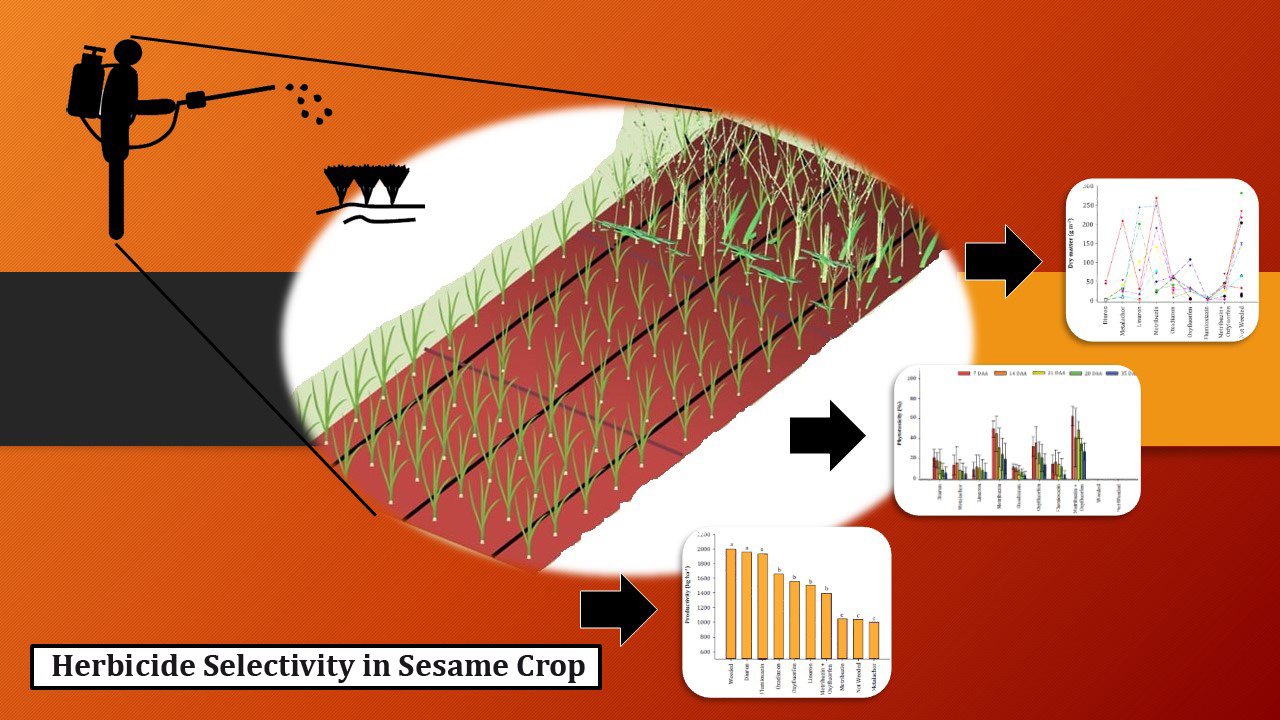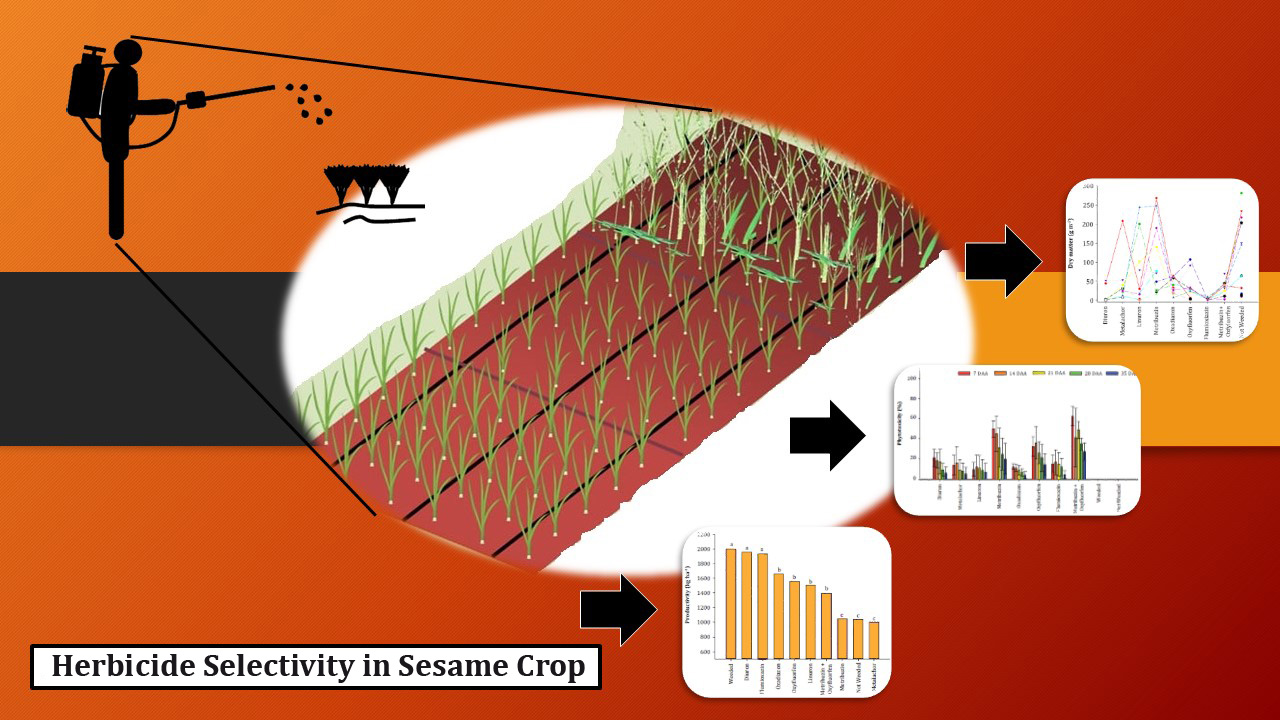Effectivity and selectivity of herbicides applied in pre-emergence in the sesame (Sesamum indicum L.) crop
Keywords:
Sesamum indicum L., Chemical ontrol, weed control, oilseedsAbstract

Weed control in the sesame crop (Sesamum indicum L.) is a fundamental practice that ensures high grain yield. Choosing adequate control methods is a crucial step to reduce costs and reach success in weed management. Among these methods, application of chemicals shows high efficiency and low cost for farmers. However, the use of this method in sesame crops is limited because there is a restricted number of herbicides registered for pre- and post-emergence applications. Considering the importance of chemical methods for weed management, the objective of this research was to select herbicides to be applied in pre-emergence that could be used to control weeds in the sesame crop. Two experiments were carried out, one to determine the efficiency and another to determine the selectivity of herbicides applied in pre emergence. The experiments were performed in a randomized complete block design (CBD) with four replicates. The treatments consisted of seven herbicides, a mixture of herbicides applied in pre-emergence, and two control treatments, one weed-free and one with weeds. Diuron and flumioxazin were found to be selective for pre-emergence. Metribuzin exhibited high toxicity to sesame, but it was effective to control several weed species, and metolachlor did not provoke high phytotoxicity in sesame, but reduced yield.
Highlights:
- The control of weeds in the sesame crop is a fundamental practice for the productivity of this oilseed.
- The chemical method applied is the most used due to its high efficiency and low cost.
- Few herbicides applied in preemergence are registered for sesame cultivation.
- The selectivity and efficiency of 8 herbicides applied pre-emergence in sesame was studied.
- The herbicides Diuron and flumioxazin were selective for the cultivation of sesame and efficient in the control of weeds.
Downloads

Downloads
Published
How to Cite
Issue
Section
License
Aquellos autores/as que tengan publicaciones con esta revista, aceptan las Políticas Editoriales.










.jpg)




